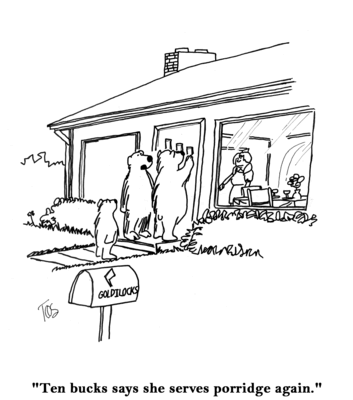
The Content Needs to be Just Right for Structured Authoring
credit: iclipart
During a recent interview, Patrick Bosek of easyDITA, brought up the idea of high-value documents that would be right for a component content management system and structured authoring. The concept is that, similar to Goldilocks’ preferred porridge, the content must be “just right” for a structured solution.
He said, and we agree, that to be “high value” documents should have some staying power within the organization. Low-value docs like memos and other “short term” content shouldn’t be considered.
While we suggest that some language in low-value content can be “canned” to use a non-tech comm term, it is very true that more robust content such as technical publications are certainly more appropriate for a structured solution. The idea that we should single-source content is pretty easy to accept, and since other than NPR, technical communication documents lead the way on this front, the question becomes – other than tech pubs what else can benefit from structured authoring and storage?
So here it is – an easy poll question and discussion in the comments request: Can structured authoring be used for more than technical publications (please vote)? Then in what industry and why (comments) or if you think technical documentation is the only documents that really work, why?